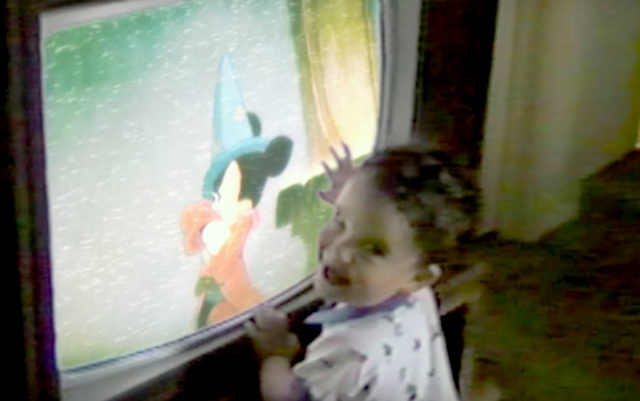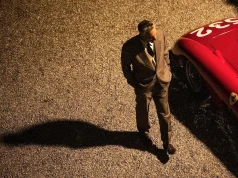
In Life, Animated — the new documentary from Academy Award-winning director Roger Ross Williams — one image in particular stands out: a toddler standing in front of a TV, hand outstretched to the image before him. The image is Mickey Mouse donning the sorcerer’s hat in Fantasia and the toddler, Owen Suskind, is positively giddy at the magic and majesty before him.
Three years later, Owen would go silent and detach from the world around him. Owen was diagnosed with autism.
Autism is a neurodevelopmental disorder that impairs social interactions, particularly verbal and non-verbal communication, and it causes the subject to engage in repetitive behavior. For Owen, that meant watching Disney movies over and over again. This was the early 1990s, and thanks to the VHS boom, those white clamshells dotted every American living room, with children sitting inches from the TV watching Dumbo for the 20th time that week. Comparatively, Owen’s viewing habits were downright normal.
But while the others watched and dreamed of fantasy, Owen used these exaggerated characters to pick up on social cues and understand reality. Owen even learned to read by watching the credits over and over again. For years Owen sat in silence before the screen, his parents worried that they had lost their son for good. Little could they expect that Owen wasn’t lost, he was preparing. Disney was getting Owen ready for real life.
Based on the best-selling book of the same name by Owen’s father, Ron Suskind, Life, Animated tracks Owen’s progress through home-movies and interviews with family members. Now in his 20s, Owen has become a spokesman for the Autism Affinities Program and is moving out of his parents’ home. It’s a feel-good story with plenty of uplift.
However, Williams fails to ask the questions that might give a better idea of why Owen connected with Disney and only Disney. Disney films are reliant on strong narrative structure, but so are Hollywood movies from the studio era. Could Casablanca have taught Owen about the world? Or was it the fantasia of color and sound, coupled with a fairy tale element that drew Owen’s attention? Those qualities exist in the works of Michael Powell and Emeric Pressburger. Would The Red Shoes have pulled Owen from his silence? Or was it simply that Owen’s childhood coincided with the affordability and popularity of VCRs and the re-release of Disney classics?
Then again, Life, Animated is not about how movies affect autistic children, but how Disney affected Owen. It is a singular story about a singular subject, and in that regard Life, Animated succeeds.
Just look at the scene where Owen, who has been leading a Disney movie club for other children with autism, invites Jonathan Freeman — the voice of Aladdin’s Jafar — to come and run lines with the students. These kids know the words, the inflections and all the right places to pause. The look on Freeman’s face is one of appreciation. For most of us, Freeman’s Jafar is wonderfully hammy, full of sneers and puns. For these kids, it is so much more. You see real joy on their faces, the joy of interacting.
It’s never “just a movie.”
On the Bill: Life, Animated. August 10–13, The Boedecker Theater, 2590 Walnut St., Boulder, 303-440-7825, thedairy.org.














